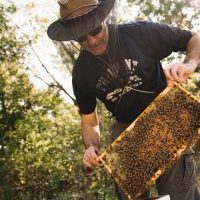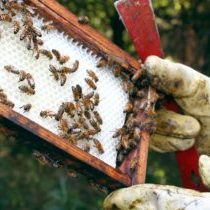
Stick to local with Minnesota Grown honey! You may have noticed that honey labels often list a flower source like Dandelion, Sweet Clover, or Basswood. But just how do the beekeepers know which flowers the honeybees are visiting? The answer lies in carefully tracking the flowers’ seasons.
Most flowers have a specific time in which they bloom. Strategically placing hives for specific time periods allows beekeepers to track which flowers the honeybees are visiting.
Dandelions bloom in May and are a rarer flavor in the world of honey since this batch is the first harvested after winter when only the strongest hives can make honey. Dandelion honey is noted for its slight grapefruit flavor.
Dutch clover blooms in June and creates a semi-sweet, mild caramel-flavored honey that many people enjoy in their tea or coffee.
Basswood, on the other hand, blooms later in summer between July 1 and July 15 and is popular for its complex and light flavor with floral and mint notes.
Sweet clover is a biennial plant that blooms from mid- to late July. Sweet clover honey offers a light cinnamon and herb flavor.


Natural elements like moisture and temperature also affect honey production in addition to the type of flowers providing the nectar. Some years favor different flavors based on the weather. For example, cool weather can both cause the bees to stay in the warmth of the hive and cause the flowers to produce less nectar, affecting honey production.
Next time you’re thinking about honey, take a closer look at the label and consider trying a new Minnesota variety – or two!
Thank you to Minnesota Grown member, Ames Farm, for sharing their honey expertise!
